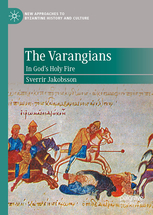Why did the Viking Age begin? Surely, it must be the most enticing mystery of many regarding the Vikings. They seem to appear, fully formed, in the historical record with the raid on Lindisfarne in 793. And yet much must have taken place earlier for these remote people to suddenly emerge out of Scandinavia and ransack the known world, as well as parts unknown.
This is one of the subjects renowned archaeologist Neil Price addresses in Children of Ash and Elm, recently reviewed in the Times Literary Supplement. He traces the story back to the fifth and sixth centuries and the power vacuum and general instability after the end of the Western Roman Empire. This might seem intuitive, but Price goes farther and says that two volcanic eruptions in the sixth century led to winters lasting for years, dust blotting out the sun and the population of Scandinavia perhaps being halved. Due to all this, violence became common and those who wielded it most successfully created competing kingdoms. These were then exported to the outside world, with trade in iron and animal skins but also with raids and conquest.
According to this, it might seem that Ragnarök had already taken place by the time of the Vikings, the old Gods were dead and the new ones emerging in Iðavellir turned out to be just as fierce, if not more so. Dr. Price might not agree with the latter analogy but his thesis is interesting, not least for the times we find ourselves in as we in Iceland await a volcanic eruption and the world in general is starting to feel the effects of climate change. Hopefully that doesn’t mean we have to start going all Viking again.
The review by Jane Kershaw is available to read here: A reassessment of the Vikings and their world | The TLS (the-tls.co.uk)
The book is available here: The Children of Ash and Elm (penguin.co.uk)




